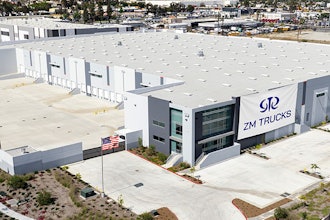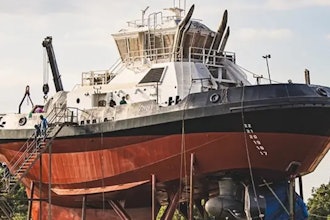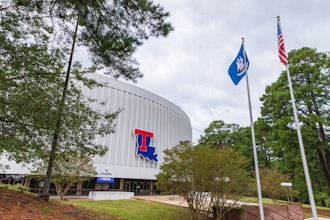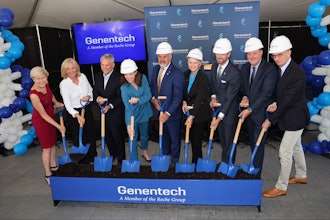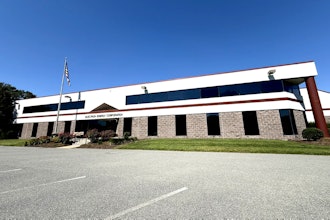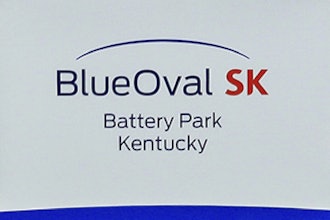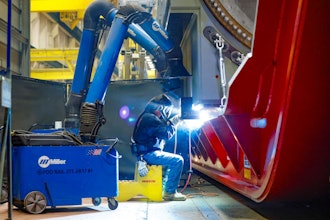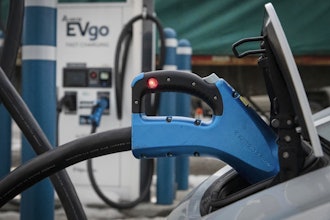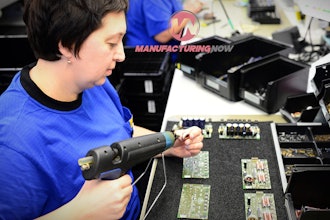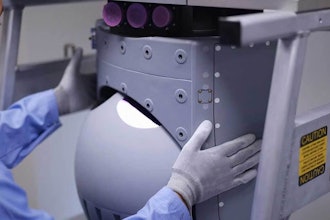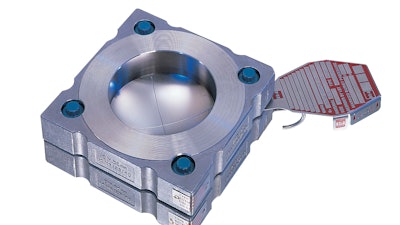
Processors and OEMs have long relied on rupture disk devices, which serve as an effective passive safety mechanism to protect against potentially damaging overpressure or vacuum conditions in industrial processes working with gases and liquids. When a specific over or under pressure event takes place, each disk is engineered to burst.
This rapid burst causes a quick transition from a sealed state to a fully open flow configuration that the user has matched to their application requirements. Once this occurs, the ruptured disk is replaced.
 The ‘curl’ at the ends of the circular score line has an engineered geometry that manages the desired opening pattern.BS&B Safety Systems
The ‘curl’ at the ends of the circular score line has an engineered geometry that manages the desired opening pattern.BS&B Safety Systems
While the focus is on rupture disks protecting critical industrial equipment reliably, consideration of their contribution to sustainability efforts is gaining attention. While the material selected for a rupture disk device is typically determined by corrosion and thermal resistance properties, the energy used in manufacturing, transporting, recycling and packaging has a contribution to overall cost of ownership. As industries demonstrate a strong commitment to enhancing sustainability, innovative rupture disk manufacturing introduces ways to provide more eco-friendly options.
“When seeking to improve their sustainability, one of the last places industries would expect to look is their rupture disks. Surprisingly, there are opportunities for OEMs and process industry users to reduce their carbon footprint,” said Geof Brazier, Director of Development of BS&B Safety Systems.
According to Brazier, while designing a new type of reverse buckling rupture disk, BS&B engineers discovered that modifying the manufacturing process not only delivered the required high performance pressure relief, but also significantly reduced the materials and energy required throughout the entire production cycle.
“Because the rupture disk is manufactured using only a fraction of the materials and energy during the manufacturing process, it is a ‘green’ solution that can provide reliable performance even at lower pressures,” said Brazier.
The new reverse buckling rupture disk is the LSR™, which operates with burst pressures ranging from 2 psi (0.14 bar) to 300 psi (20 bar) for varied applications requiring low and medium burst pressures. The product is available in the 1” to 8” sizes commonly required in industry and can be mounted in a safety head or as a part of a welded assembly designed for either flange or threaded piping system installation.
According to Brazier, the rupture disk’s unique approach to single-piece construction is the primary factor that helps minimize material usage as well as simplify material disposal at end of life.
A patented, proprietary score design provides a hinge action that allows the disk to open as a “single petal” engineered for non-fragmentation while providing a high flow area for pressure relief. The ‘curl’ at the ends of the circular score line also has an engineered geometry that manages the desired opening pattern. This improves a key feature of circular scored reverse buckling disks, which typically require a second downstream hinge component. By eliminating this downstream hinge component, over 80% by weight of the raw material required for a typical rupture disk can be eliminated, a factor that reduces shipping costs.
The green type LSR rupture disks require only a fraction of the energy to produce, compared to traditional manufacturing methods. Typically, an annealing furnace is utilized to heat treat certain metal components in the rupture disk to facilitate more ductility and reduce hardness by altering the chemical or physical properties of the metal.
 The green type reverse buckling rupture disk like that from BS&B can be mounted in a safety head or as a part of a welded assembly.BS&B Safety Systems
The green type reverse buckling rupture disk like that from BS&B can be mounted in a safety head or as a part of a welded assembly.BS&B Safety Systems
In contrast, the LSR rupture disk does not require any type of heat treatment. No water is consumed in the production process either. Every product is manufactured in a facility with ISO 14001:2015 environmental management certification.
The packaging of the product was also taken into careful consideration, resulting in the individual packaging of rupture disks in recyclable cardboard cartons.
During the development of the rupture disk, ensuring reliable industrial performance remained the top priority, even with sustainability as a key focus, says Brazier. As a result, the LSR rupture disk combines new performance features with the trusted platform recognized in the Sta-Saf® family of rupture disks.
Because it is a “reverse buckling” rupture disk, the LSR is expected to outperform many of the alternatives with respect to service life.
Unlike traditional forward-acting disks, where the load is applied to the concave side of a dome, in a reverse buckling design, the dome is inverted toward the source of the load. Burst pressure is accurately controlled by a combination of material properties and the shape of the domed structure. By loading the reverse buckling disk in compression, it can resist operating pressures up to 95% of minimum burst pressure, even under pressure cycling or pulsating conditions. The result is greater longevity, accuracy and reliability over time.
 OEMs and processors can install rupture disks that utilize less raw material, water and energy and are designed with end-of-life disposal in mind.BS&B Safety Systems
OEMs and processors can install rupture disks that utilize less raw material, water and energy and are designed with end-of-life disposal in mind.BS&B Safety Systems
Reverse buckling rupture disks are typically designed for non-fragmentation upon activation and are recommended for use with downstream pressure relief valves to isolate them from processes, ensuring leak tightness and reduced valve maintenance.
The rupture disks install directly into an appropriate safety head to provide the best seal for the application operating conditions. A “bite seal” feature in the safety head engages with the disk material to concentrate the clamping force applied to the rupture disk flange, providing a bubble-tight seal to both sides of the disk. A unique casting design minimizes the material required and reduces the weight of the safety head [holder] by 18 – 34%.
Brazier points out that rupture disks have always contributed to sustainability because they are used to isolate safety relief valves from normal process operating conditions and provide a seal designed to prevent hazardous fugitive emissions. Now, with the additional modifications to the rupture disk itself, OEMs and processors can install rupture disks that utilize less raw material, water and energy and are designed with end-of-life disposal in mind – all without sacrificing reliable performance.










